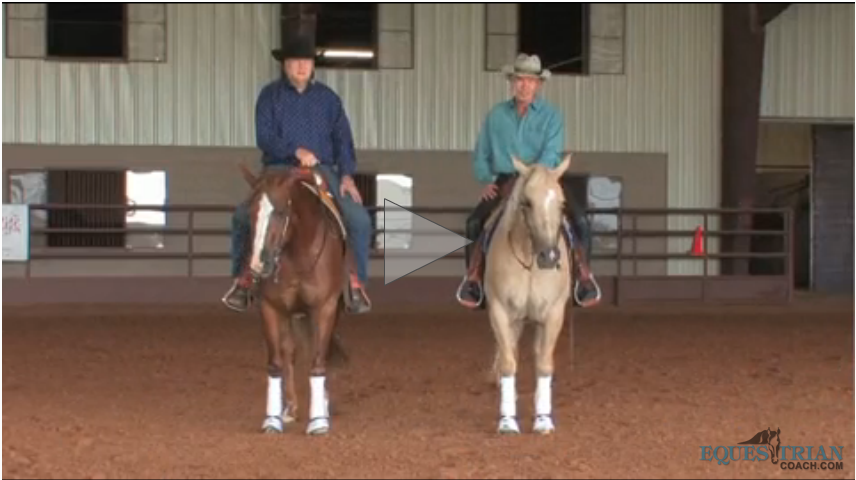Bernie Traurig is perhaps the only athlete to have represented the United States Equestrian Team and reached the top of the sport in three of the international equestrian olympic disciplines: show jumping, dressage, and eventing. He was inducted into the National Show Hunter Hall of Fame and received the United States Hunter Jumper Association (USHJA) President’s Distinguished Service Award. He competed in eight world cup finals and is the winner of over 60 show jumping grand prix events and 15 grand prix and grand prix special classes in dressage. Currently, Traurig travels as a trainer and is the founder of equestriancoach.com, the leading online equestrian training resource (See EQ Summer 2013).
I had ridden in a western saddle before on trail rides, but I had never ridden a reining horse. We were filming a reining lesson for equestriancoach.com with champion reiners Tim McQuay and Tom McCutcheon, and I decided to take advantage of the moment and try it myself. Tom put me on a really, really good horse, and that makes all the difference in the world. I didn’t have a difficult time because I was on a machine that was so well trained that he made me look good. Probably as in all disciplines, training the horse is the real story. Training requires skill and expertise—maybe more than riding.
Sitting on that horse reminded me of what originally got me interested in dressage. I was visiting dressage legend, Johann Hinnemann, in Germany, and he asked me if I’d like to ride one of his best horses. Of course I said yes, and he put me on a wonderful horse, one of the best in the world. The next thing I know, I’m experiencing dressage and doing all sorts of things that I had never done in my life. The fact that I was sitting on such a quality animal that knew exactly what to do was just what happened with Tom.
That day, I tried the circles, gallops, transitions, spins, stops, and backing. Reining horses are trained so that when you put your legs forward, they back up. I’ve never done that on a hunter! The same with the stops: you put your lower leg forward, and they stop without pressure on their mouths. A little more similar to our sport was the spin and the reaction to rein aids. These horses are ultra-sensitive to a touch of the neck rein in one direction or the other. It seems like you just think about moving your hands and the horse responds. Maybe not quite to that level of sensitivity, but I’d love hunters to be more sensitive to aids.
The sport of reining generates an amazing amount of enthusiasm from the spectators and riders. They cheer and whistle, and get excited about a flying change! Could you see that in hunters? It’s a sport a lot of people can do. And it’s more affordable than hunter jumpers. The entry level to get into reining with a good horse is more affordable than an entry horse required for jumpers.
There is a lot we can learn from reining. Sliding stops don’t pertain to hunter jumpers, but we sure do want them to slow down quickly and make fast turns. There’s a top Canadian Olympian jumper named Hugh Graham. Hugh began riding at age 12 when, with no previous experience, he broke and trained his family’s pony, Thunder. He was a champion calf-roper throughout high school before he switched to jumpers. Hugh can do lightning fast turns on a jumper course. Because of his western background, he can spin the horse on the haunch and change direction probably faster than anyone I’ve ever seen. You can watch him here.
I had great fun reining. You should try it.

